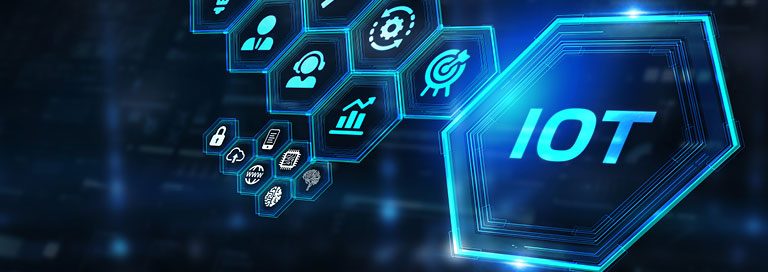The Internet of Things can have a significant impact on the IT environment.
“Smart” buildings and lighting systems that automatically adjust for optimum energy efficiency and comfort. Medical devices that report vital signs and other data to doctors. Vehicles that relay maintenance requirements and potential problems to fleet operators. Store shelves that alert the warehouse when products need to be replenished.
These are just a few of the applications of the Internet of Things (IoT) — the collection of sensors, automation tools, cameras and other devices that collect data and handle many tasks. Cisco has estimated that there will be 500 billion IoT devices by 2030 as organizations in almost every industry rush to take advantage of the technology.
However, this massive influx of devices and data has a significant impact on the data center, the network and security. The goal of IoT solutions is to collect and rapidly analyze data to gain business insight. Organizations need data center models that enable rapid collection and processing of data, and networks that provide connectivity across a wide range of devices. Because each device could represent a point of entry into the IT environment, multiple security concerns must be addressed.
Organizations must carefully plan their IoT initiatives and implement a robust IT infrastructure to handle nonstop data transmissions from hundreds or even thousands of devices. They must prepare their compute, networking and security environments for the demands of the IoT.
A New Approach to the Data Center
The value of the IoT lies not in collecting this data but in analyzing it as quickly as possible. In other words, IoT data should be used to improve operational efficiency and customer service, and inform the development of new services, business models and revenue streams.
Depending upon the use case, the timeframe for data collection and analysis can range from months to milliseconds. When larger data sets are being analyzed to provide deeper insights — the kind of insights that don’t require immediacy, processing in the data center or cloud may be sufficient. But as demand increases for both depth and immediacy in analytics, bandwidth limitations and latency issues require a new approach to compute.
One approach is to move compute resources to the “edge” of the network so that data can be processed closer to the source. When compute power is at the edge, you reduce the latency that is inevitable when data must be sent to the data center or cloud, and help prevent network bottlenecks caused by images, video and other large datasets.
Creating the Network Foundation
Edge computing relieves some bandwidth demands, but organizations still need reliable, high-speed connectivity. A robust network forms the foundation of the IoT, enabling devices to share information with IoT applications and platforms.
An IoT network must be able to support wired, wireless and mobile connections with tremendous variations in communication protocols. Many IoT connections use short-range wireless technology such as Wi-Fi, Bluetooth and Zigbee. However, cellular connections are growing rapidly, as well as low-power technology such as Sigfox or LoRa.
Corporate networks often evolve over time with separate management interfaces for wired and wireless. If additional network technologies are bolted on to support IoT devices, organizations wind up with an unmanageable mess. To be successful, organizations need a converged network with a high degree of interoperability and comprehensive management.
Administrators should be able to prioritize mission-critical applications and latency-sensitive IoT systems — for example, video conferencing traffic could be given a higher priority than LED lighting. Network monitoring is also essential to ensure the high levels of performance and availability that many IoT systems require.
IoT Security: Challenging but Critical
Many IoT devices lack the security features of a PC or smartphone — they simply don’t have the computational power to support security tools. However, they can still be infected with malware, which can then be distributed throughout the IT environment.
Each device increases the organization’s attack surface, creating another potential entry point to the corporate network. Many IoT devices have default usernames and passwords, making it easy for a hacker to gain access. Hackers can hijack hundreds of thousands of compromised IoT devices to create botnets that launch massive DDoS attacks.
In addition to securing the devices themselves, organizations must protect IoT data whether it’s in use by an application, in flight across the network or at rest in storage. The large number of devices and the massive volume of data they generate make security especially difficult.
Often, organizations must address these vulnerabilities at the device level, adding to the complexity. However, some organizations do not fully consider security implications when launching IoT initiatives. If an IoT security strategy is not developed from the very beginning, organizations must react to vulnerabilities and threats.
Where to Go from Here
Clearly, there’s a lot to consider when planning an IoT initiative. Organizations must also plan for scalability, because IoT applications tend to grow beyond their initial scope. A managed services provider (MSP) with broad expertise across the IT environment can help organizations lay the proper foundation for success. MSPs can also provide the ongoing monitoring, management and support that ensure the performance, availability and security of the solution long-term.




